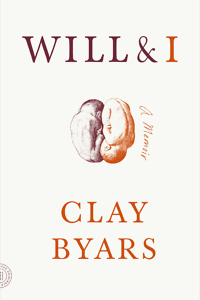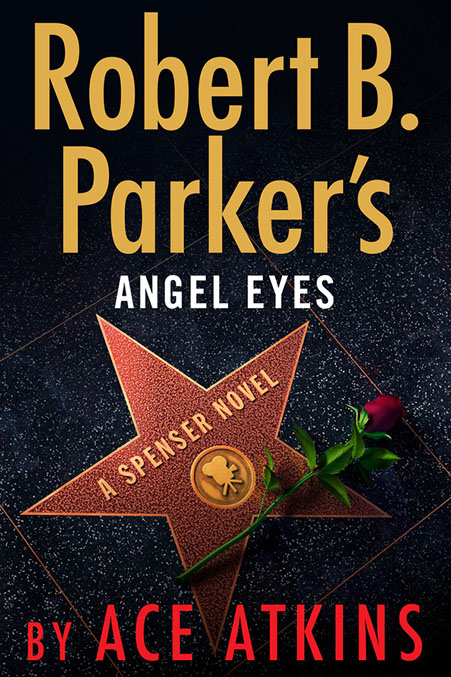When Literature is a Lifeline
At nineteen, Clay Byars became a writer after a stroke left him unable to talk
Disabled Americans, long invisible in this nation’s consciousness, suddenly emerged into the spotlight during the torturous 2016 presidential campaign. Triggered by Donald Trump’s mocking of reporter Serge F. Kovaleski, this new visibility was brought into sharper focus by Anastasia Samoza, whose poised, empathic speech at the Democratic National Convention ushered in a fresh spirit of activism, highlighted online with hashtags such as #cripthevote and #NothingAboutUsWithoutUs. Now disabled Americans face deep budget cuts to Medicaid: in this new political climate, they’re staring down the long barrel of a political rifle aimed at their hearts.
 In the literary sphere, though, disabled writers have made their marks for decades, covering the ideological spectrum. As an evangelical child in the 1970s, I was enthralled by Joni Eareckson’s autobiography, Joni, which chronicled her struggle with quadriplegia and depression following a swimming accident in Chesapeake Bay, detailing how she learned to draw with a pen gripped between her teeth. (Eareckson regards her survival as a testament to the mercy of Jesus Christ.) Lucy Grealy’s harrowing 1994 memoir, Autobiography of a Face, recounted her survival of a rare childhood cancer that left her disfigured and was a surprise bestseller. Also a bestseller, The Diving Bell and the Butterfly by French author Jean-Dominique Bauby conjured the anguish of the author’s near-total paralysis to a stroke: he dictated the book with the blink of a single eyelid. In 2010 Chattanooga-born poet Paul Guest published One More Theory About Happiness, which tracks his own experience of quadriplegia, from a bicycle accident at the age of twelve to acclaimed professor of creative writing.
In the literary sphere, though, disabled writers have made their marks for decades, covering the ideological spectrum. As an evangelical child in the 1970s, I was enthralled by Joni Eareckson’s autobiography, Joni, which chronicled her struggle with quadriplegia and depression following a swimming accident in Chesapeake Bay, detailing how she learned to draw with a pen gripped between her teeth. (Eareckson regards her survival as a testament to the mercy of Jesus Christ.) Lucy Grealy’s harrowing 1994 memoir, Autobiography of a Face, recounted her survival of a rare childhood cancer that left her disfigured and was a surprise bestseller. Also a bestseller, The Diving Bell and the Butterfly by French author Jean-Dominique Bauby conjured the anguish of the author’s near-total paralysis to a stroke: he dictated the book with the blink of a single eyelid. In 2010 Chattanooga-born poet Paul Guest published One More Theory About Happiness, which tracks his own experience of quadriplegia, from a bicycle accident at the age of twelve to acclaimed professor of creative writing.
In Will & I, Clay Byars joins the ranks of memorable memoirists facing disability with remarkable courage. The story shifts back and forth in time, from a medical catastrophe as a college student to his current life in a renovated barn in the humid, honeysuckled Alabama countryside.
The book opens with Byars working to strengthen his vocal chords through singing lessons, a decision which opens a path toward a literary voice as well. (Now in his forties, Byars serves as editor of Narrative Magazine.) He then weaves in the story of his injury. During his sophomore year at the University of the South in Sewanee, he was severely injured in an automobile crash which left the nerves in one shoulder impaired. Months later, a surgeon opted to repair it by transferring a healthy nerve from Byars’s leg. During the procedure he nicked a blood vessel, and Byars suffered a massive stroke.
Initially told he would be paralyzed from the eyelids down, Byars embarked on a tedious, painful rehab process, buoyed by a raft of determined caregivers—his parents and older sister; his identical twin, Will, also a Sewanee student; and a compassionate aide named Candy—as he learned to shake off the chains of his limitations. At first unable to speak, he gradually learned to whisper and then to stand and to walk, but the psychic injuries ran as deep as the physical damage. When Will and a few friends visited him in the hospital, he writes, “I wanted to say Don’t mind this temporarily spastic and drooling bag of skin. I’m still me underneath, but I didn’t. I felt trapped in a costume I couldn’t even tell anyone was a costume. … One girl told me my eyes were so alive.”
 Recovery was achingly slow, but in fits and starts Byars reclaimed the skeleton of his old life even as he surrendered the muscle of his youth, his exuberance, and his desire for romantic connection. His book probes the sexuality of the disabled with subtle candor, much as Ben Mattlin does in Miracle Boy Grows Up. But for Byars there was a tantalizing sheen of light at the end of the dark tunnel, which he discovered by chance at the computer in his bedroom: “I sat down, resting both of my hands on the keyboard. Slowly I began to type, using only the index finger of my right hand. I remember being impressed with myself, that I could do this, dragging my one hand around like a Ouija-board pointer.” Writing, even in such a laborious fashion, offered “the beginning of a new life, one in which I would no longer try to talk myself out of reality.”
Recovery was achingly slow, but in fits and starts Byars reclaimed the skeleton of his old life even as he surrendered the muscle of his youth, his exuberance, and his desire for romantic connection. His book probes the sexuality of the disabled with subtle candor, much as Ben Mattlin does in Miracle Boy Grows Up. But for Byars there was a tantalizing sheen of light at the end of the dark tunnel, which he discovered by chance at the computer in his bedroom: “I sat down, resting both of my hands on the keyboard. Slowly I began to type, using only the index finger of my right hand. I remember being impressed with myself, that I could do this, dragging my one hand around like a Ouija-board pointer.” Writing, even in such a laborious fashion, offered “the beginning of a new life, one in which I would no longer try to talk myself out of reality.”
The memoir’s title suggests that Byars will explore the intricate bond he shares with his identical twin, and indeed the book includes a hilarious tutorial on the various kinds of twins found in nature. But for the most part Will is a shadowy figure, the unharmed foil for occasional self-pity. Will’s on-again, off-again engagement with his twin hints at the possibility of a deeper undertow of anger. If it is there, it is something Byars chooses not to pursue.
In this regard Will & I remains true to the conventions of disability memoir: it serves up an inspiring tale in clear, unadorned prose, a pilgrim’s progress through sloughs of despondency. There’s a guilelessness to the storytelling here that seems deliberate, perhaps a signal that for Byars certain conflicts and emotions are better left in the cellar.
But his hope is contagious; his push toward an authentic self is both understated and forthright. Will & I is a richer book thanks to this instinct to tread lightly. And in this era, when the rights and lives of the disabled are under siege in Congress, Clay Byars lends his talent on the page to a broad, diverse community whose voices are too often muted and ignored.
 Hamilton Cain is the author of This Boy’s Faith: Notes from a Southern Baptist Upbringing and a finalist for a 2006 National Magazine Award. A native of Chattanooga, he lives with his family in Brooklyn, New York.
Hamilton Cain is the author of This Boy’s Faith: Notes from a Southern Baptist Upbringing and a finalist for a 2006 National Magazine Award. A native of Chattanooga, he lives with his family in Brooklyn, New York.


